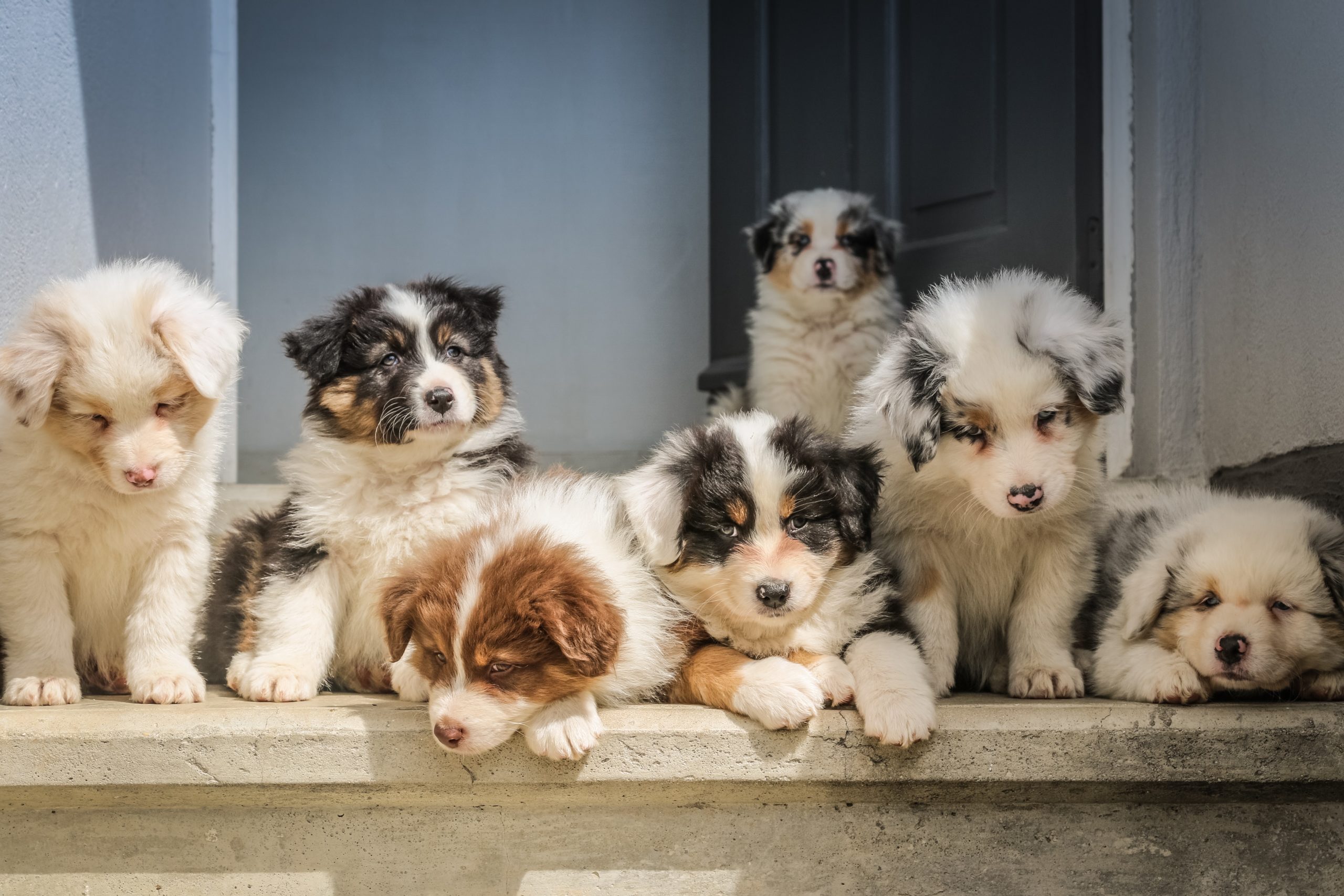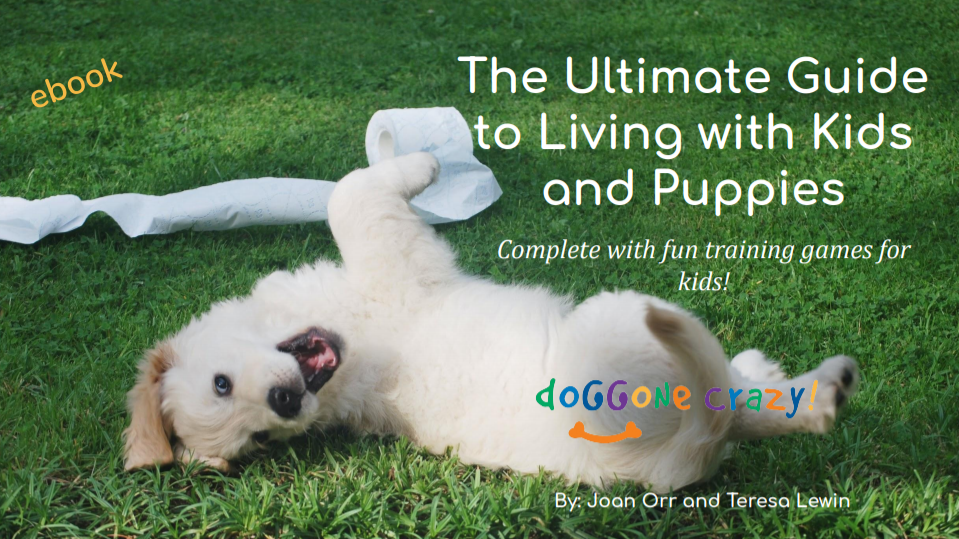Your kids can help with training and they should! You will have a dog that respects, listens and loves your kids. Here are some suggestions on things you kids can help with at different ages:
Age 5 and Under
Children in this age range must be supervised at all times around the puppy and any other dog. By supervision, we mean the YOU ARE RIGHT THERE actively engaging with the child and the puppy, not feeding the baby, doing the dishes or talking on the phone.
At this age child can participate in training by dropping a treat on the floor for the puppy every time you click. This teaches the puppy to have self control around even the smallest family members. Children in this age range can also toss a toy for the puppy, but only an adult should get the toy back (by trading for a treat or a better toy).
Age 6-12
Kids in this age range can begin to work independently with the puppy under adult supervision once the puppy understands basic commands and can exercise self-control in waiting for the child to give or toss the treat. Kids can be excellent dog trainers if given the chance.
The basic steps in training are:
There is no point in saying a word to a puppy that he doesn’t understand. Puppies do not come to us knowing what “sit” means, they need to hear the words while they are doing the action that we want them to associate with the word. If your puppy is running away from you and you run after him shouting “Here Rover”, he learns that “Here Rover” means run away.
Lots of people have taught their dogs to run away using this method! Only call your puppy to you when you know he is coming already and then give him a great treat or play a fun game when he gets to you. Kids can learn these simple training principles and be rewarded with a puppy that loves to follow their instructions.
Age 12-16
Older kids can take greater responsibility for the care and feeding of the puppy. They can feed, groom, train and clean up after the puppy. They can let the puppy in and out of the crate. Most children in this age range can handle the puppy independently in a group obedience class (while a parent observes) and can continue as the puppy grows older and stronger.
Behaviour specialist Teresa Lewin suggests that a child is old enough to handle a dog independently when the dog respects and obeys the child, when the child can read the dog, predict an impending problem and can intervene appropriately. This will occur at different ages and depends on the maturity of the child, the relationship the child has developed with the dog and the temperament and level of training of the dog.
Some children in this age range will be safe walking the dog in the neighbourhood without adult supervision. This depends on a number of factors. According to Teresa Lewin of Doggone Safe, some basic criteria must be met:
Changing Relationships
As the child and puppy grow, relationships can change. The puppy may ignore a baby altogether and become intensely interested in chasing an active toddler. A previously calm and placid puppy may suddenly at 6-9 months old start challenging authority and becoming pushy with children it views as playmates.
As children become adolescents they begin to smell different to the dog and the dog’s behaviour toward the child may change. Parents need to be watching for subtle changes in the dog’s behaviour toward the children and continue with training using positive methods throughout the life of the dog.
By avoiding punishment, rewarding good behaviour, setting limits (for both kids and dogs), providing kid and dog zones using gates and or crates and involving kids in the care and training of the puppy from the beginning an extraordinary relationship can develop between kids and the dog that will bring joy to the whole family.
Training can and should be done by the whole family. Here's what you will learn in this FREE ebook.

